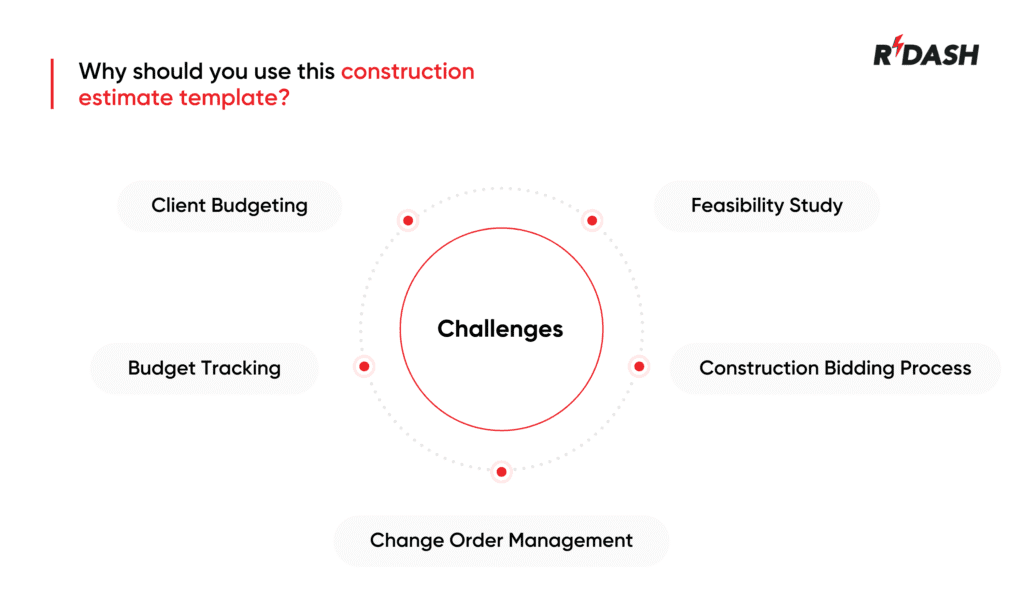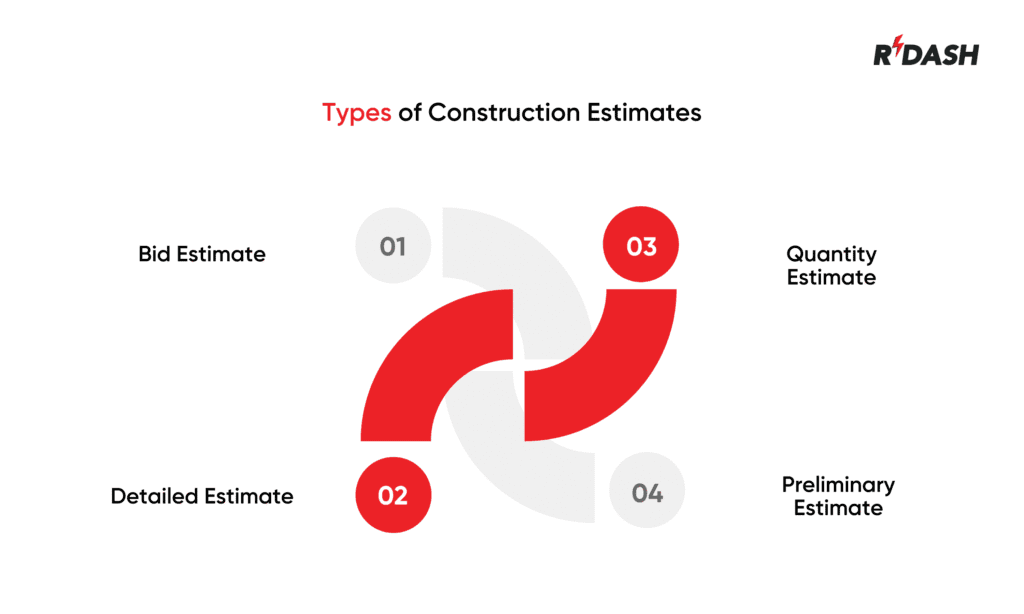What is a construction estimate?
A construction estimate gives a clear breakdown of all the expenses needed to finish a project. It covers materials, labor, equipment, permits, and other expenses. Builders, contractors, and project managers use estimates to figure out how much money will be needed before starting the work.
A good construction estimate gives everyone involved – like clients, contractors, and suppliers – a clear idea of what to expect. It helps prevent unexpected costs and keeps the work on track with the budget. Without a good estimate, a project might run out of funds or face delays.
What is a construction estimate template?
A construction estimate template is a ready-to-use document that makes it easier to create detailed estimates for your projects. Instead of starting from scratch every time, you can use a standard format to list out all items, quantities, unit costs, and total costs.
These templates help contractors and teams save time, stay organized, and make fewer errors. A clear template also ensures that all costs are captured and shared with clients in a professional and easy-to-read way.
Why should you use this construction estimate template?
Using a construction estimate template has many benefits for both contractors and clients. Here’s why it’s worth using:

1. Client Budgeting
A detailed estimate lets clients see the full expected cost upfront. It breaks down where every dollar will go, so there are no surprises later. Clients can plan their finances better and decide whether the project fits within their budget.
2. Budget Tracking
Once the work begins, the estimate serves as a guide to track spending. By comparing real expenses to what was estimated, project managers can spot overspending early and fix it before it becomes a bigger issue. This helps keep the project within budget and prevents last-minute financial stress.
3. Change Order Management
Construction projects often face changes in scope. Whether it’s due to design updates or unexpected site conditions, a good estimate template helps you manage these changes easily. You can quickly update costs and share the revised numbers with the client. This keeps everyone on the same page and avoids payment disputes.
4. Construction Bidding Process
When bidding for a project, contractors need to submit an estimate to show what the work will cost. A professional template makes bids more accurate and detailed. Having a detailed estimate also makes your bid stronger and builds trust with clients because they know you’ve planned carefully.
5. Feasibility Study
Before starting a big project, clients often want to know if it’s practical and affordable. An estimate template makes it easier to prepare a clear feasibility report by laying out all the expected costs. This helps clients make smart decisions and secure funding if needed.
When to use a construction estimate template
A construction estimate template is useful any time you need to plan, budget, or communicate project costs. Contractors, project managers, and even clients can use it during different phases of a project.
For example, when you’re bidding on a new project, a template helps you present your costs clearly. During planning, it helps you break down every cost detail so you can avoid missing anything important. Even during the project, you can use the template to compare actual costs with what you planned, making it easier to track your budget and manage any changes.
Whenever you want to ensure that your estimates are clear, accurate, and professional, a construction estimate template can make the process much simpler.
Types of construction estimates
Construction projects may require different kinds of estimates, depending on the stage and the level of detail needed. Here are a few common ones:

1. Bid Estimate
A bid estimate is prepared when you want to submit a proposal for a project. It shows the client what you plan to charge for materials, labor, and other costs. A clear bid estimate can help you win more projects because it shows you’ve done your homework.
2. Detailed Estimate
A detailed estimate covers every part of the work – it shows the quantities, rates, and total costs for materials, labor, equipment, and more. This is helpful for big projects where you need tight cost control.
3. Quantity Estimate
A quantity estimate focuses on measuring how much material and labor will be needed. It’s very helpful during the planning and procurement stages because it helps you figure out how much to order and how to schedule work.
4. Preliminary Estimate
A preliminary estimate is done at the very beginning of a project. It provides an approximate cost based on early drawings or project ideas. Clients often use this type to see if a project is financially possible before moving forward.
Why you need this construction estimate template
Having a good construction estimate template can help you run better, more profitable projects. Here’s why:
Consistency Across Projects
A template ensures that all your estimates follow the same format. This makes it easier for you and your team to prepare, review, and update them. Clients also find it easier to read and understand consistent estimates.
Budget Control
By laying out all costs in one place, the template helps you avoid surprises and track spending more accurately. You can compare estimated costs with actual costs at any time and take action if you’re going over budget.
Time Efficiency
A ready-to-use template saves hours of work. Instead of starting from scratch each time, you can simply fill in the needed details with a ready template. This means you can focus more on the work itself and less on paperwork.
Enhanced Accuracy
A good template acts as a checklist for costs you might otherwise forget. This reduces the chances of missing key expenses and helps you present more reliable numbers to clients.







